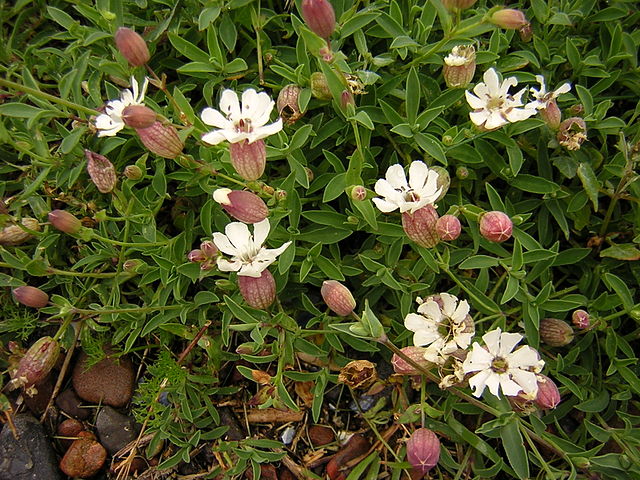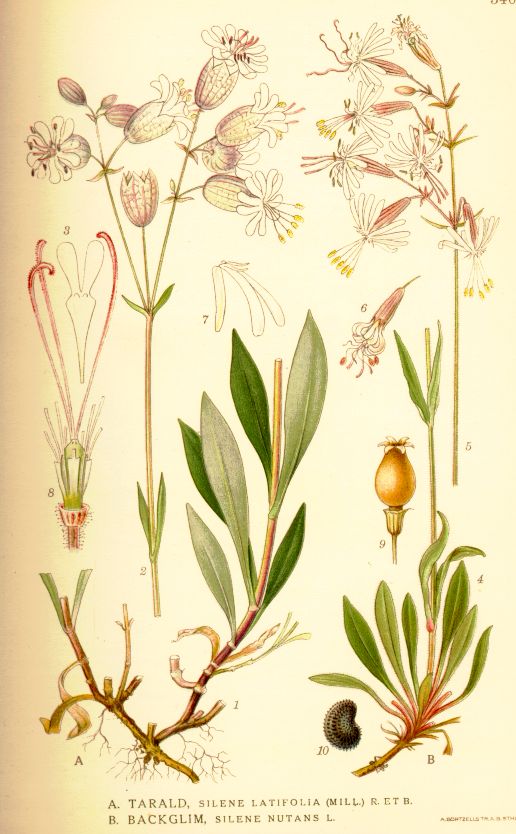! Nouveau site ici !
Vita > Plantae > Magnoliophyta > Magnoliopsida > Caryophyllales >
Caryophyllaceae > Silene
Silene vulgaris
(Silène enflé)

 | ** - *
| ** - *
Vita > Plantae > Magnoliophyta > Magnoliopsida > Caryophyllales >
Caryophyllaceae > Silene
Silene vulgaris
(Silène enflé)

Vivace sauvage aux fleurs blanches riche en nectar dont le calice est nervuré et renflé en forme de ballon plus ou moins ovale. Plante commune en France.
⬀
Le  donne accès au menu
donne accès au menu (c'est votre point de repère) 😊 ;
En dessous vous avez la classification, à partir de la vie (Vita, premier rang) jusqu'à la classe au dessus de la plante, dont vous trouvez ensuite le nom scientifique/botanique (latin) puis le nom commun (français), le cas échéant ;
C'est aussi un lien vers la fiche complète (tout comme la ✖, en bas à droite, et le +, en dessous de la description) ;
Vient alors l'illustration (ou ce qui la remplace, en attendant), la comestibilité :
Et en bas
⬂





